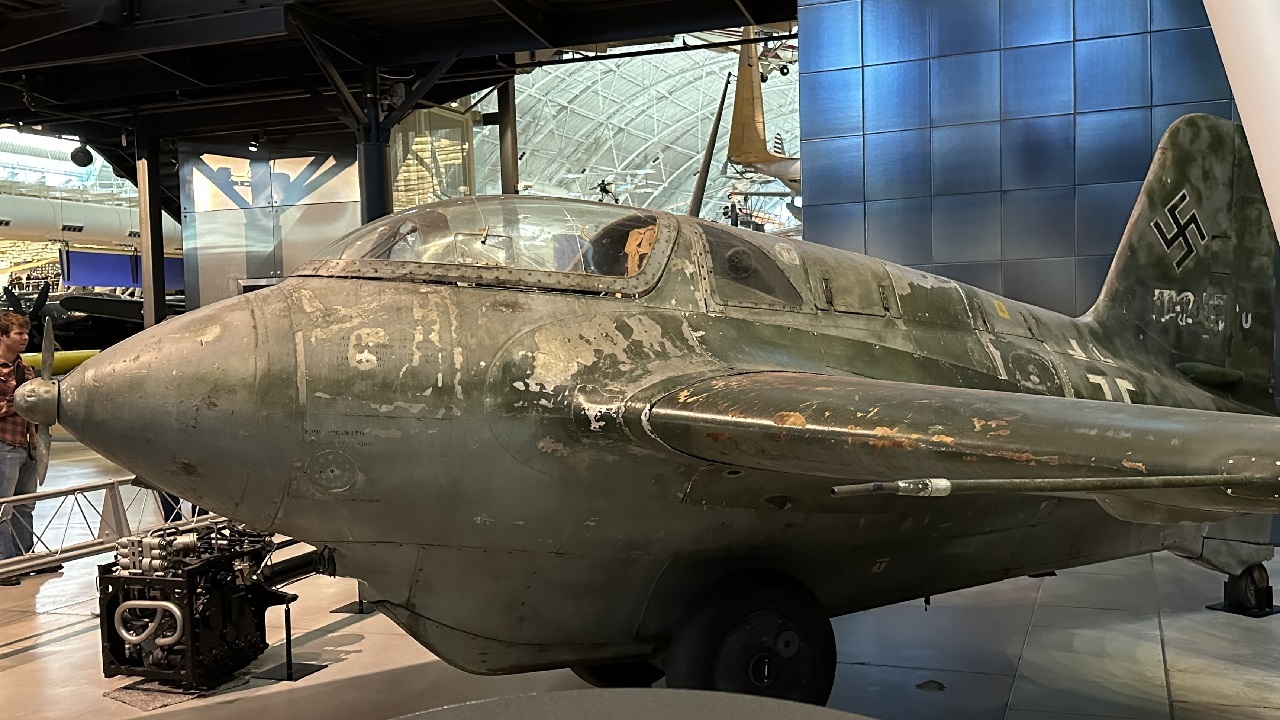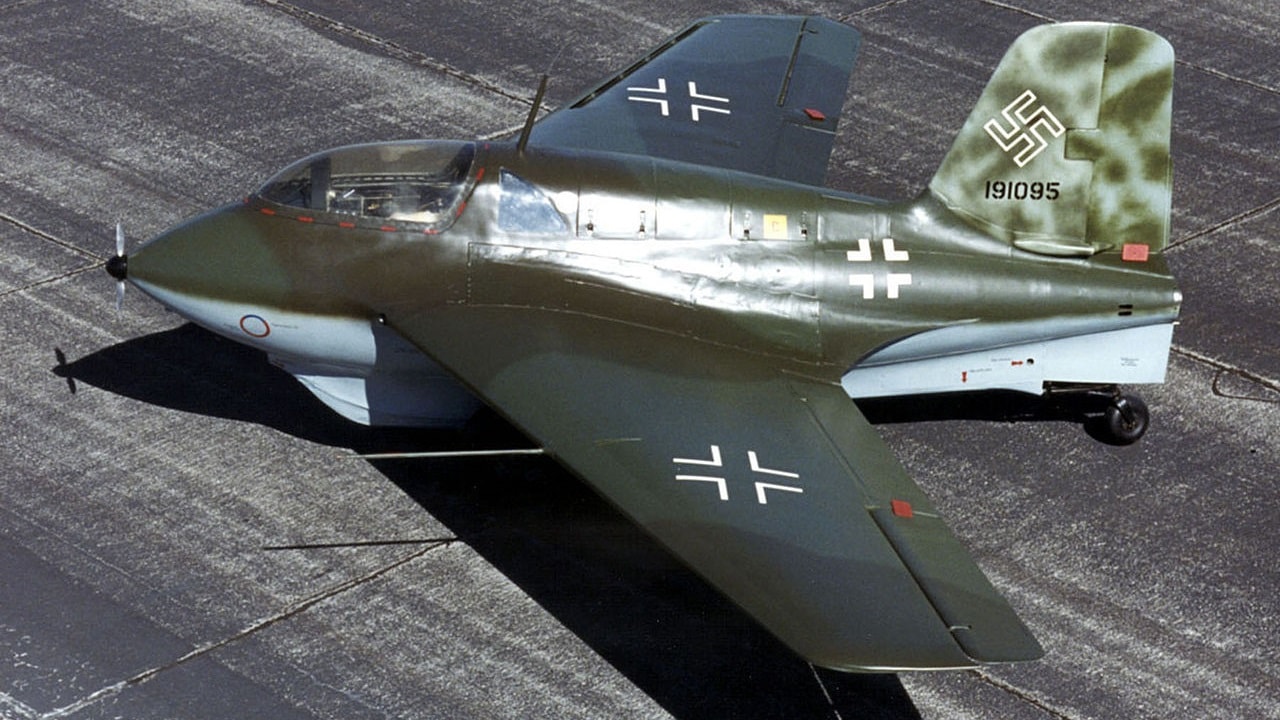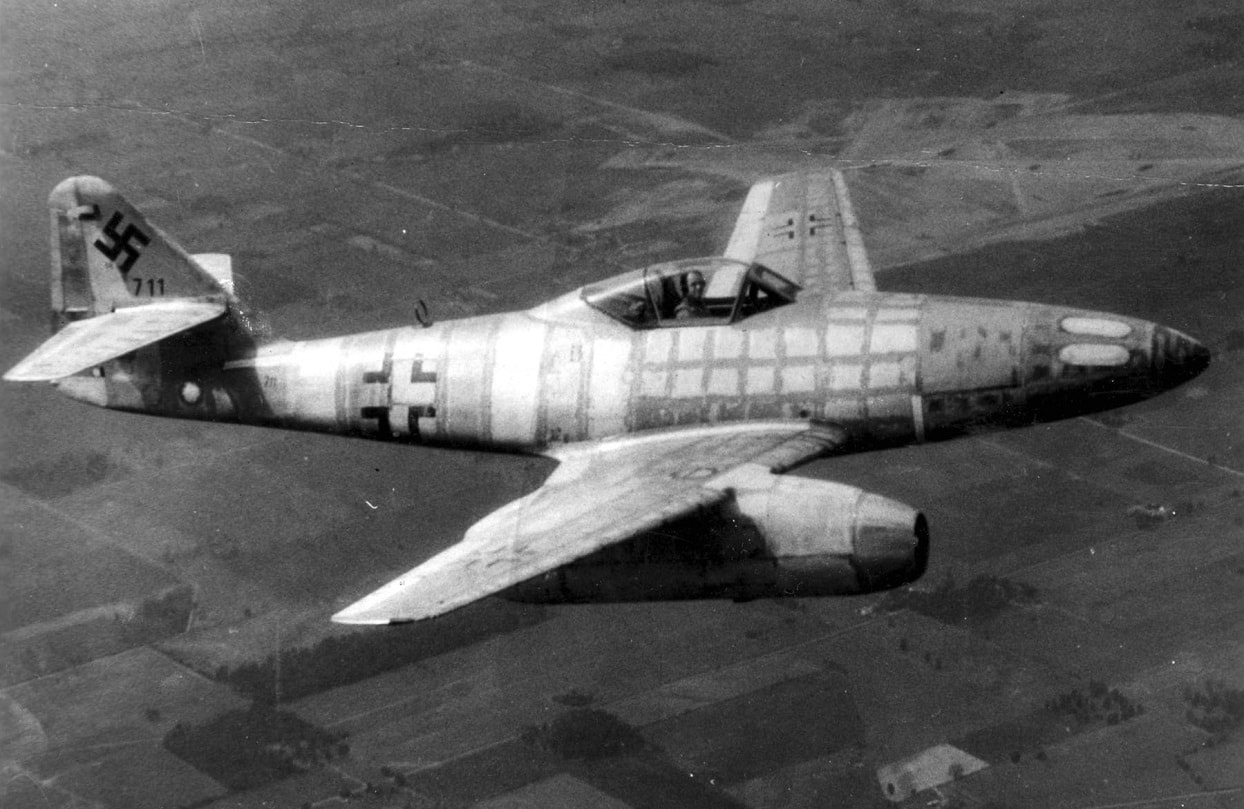A former U.S. Air Force officer explains why the Me 262 is so important to aviation history: The Germans have long been innovators in the area of weapons technologies. This was especially true during WWII in general and the year 1944 in particular. As noted by respected aviation author Don Hollway, “1944 was the year of the Wunderwaffen, German wonder weapons. King Tiger tanks. Jet fighters. Helicopters. Guided missiles. Cruise missiles. Prototype ICBMs. Railway guns. Long-range superguns.” The jet fighter in particular that Mr, Hollway is referring to is the Messerschmitt Me 262 Schwalbe (“Swallow”).
However, the Me 163 Komet rocket plane was another craft in contention. Back to the Me 262, the Schwalbe was indeed a history maker, though luckily for the Allies it wasn’t a true gamechanger, i.e. it didn’t turn the tide of the air war over Europe. Let’s take a look at how the plane both succeeded and failed.
Beating the Allies to the Punch
The Me 262 was the world’s first operational jet fighter and the only fighter of WWII to engage in air-to-air combat against enemy warplanes. Making its maiden flight on July 18, 1942, and its operational debut in April 1944, the Schwalbe beat the British Gloster Meteor to the punch in those milestones by eight months and three months respectively. Whilst the RAF jet did see combat as well, it was relegated to (1) going after unmanned V-1 “buzz bombs” on the homefront and (2) the ground attack role in Continental Western Europe. Meanwhile, the Americans lagged even farther behind in the jet fighter race, as the Bell P-59 Airacomet didn’t make her maiden flight until 1 October 1942 and didn’t even see combat at all.
The Me 262 was also the fastest of the three jets, clocking in at a max airspeed of 540 mph (870 kph), compared with the 415 mph (667 km) of the Meteor and the relatively plodding (yes, being slightly tongue-in-cheek here) 413 mph (665 kmh) of the Airacomet. Armament-wise, the German warbird wielded four Rheinmetall-Borsig 30mm MK 108 cannons in the nose, which had a 650 rounds-per-minute rate of fire and was nicknamed the “pneumatic hammer” due to its distinctive firing sound. The Meteor had four Hispano MkV 20mm cannons, and the P-59 packed a single M10 37mm autocannon and three Browning M2 “Ma Deuce” 50 caliber machine guns.
Messing with the Messerschmitt
Luckily for the Allies, the development and deployment alike of the German jet fighter were hampered by bureaucratic meddling. The plane had been conceptualized even before the start of the war, with plans drawn up in April 1939. However, the project hit its first bureaucratic snag shortly thereafter, courtesy of Hermann Göring, head of the Luftwaffe and Hitler’s overall second-in-command, who cut expenditures for jet engine research. In addition, despite the Germans’ aforementioned knack for technological innovation, the German view held that the war could be won using conventional, piston-powered aircraft. This attitude was somewhat understandable, at least, given the initial performances of the Messerschmitt Bf 109 and Focke Wulf FW 190 fighters and Junkers Ju-87 Stuka dive bomber.
Last but not least, Der Fuhrer himself had to put in his two cents’ worth (or would that be zwei pfennige worth?), insisting that the jet fighter instead be developed as a bomber. As described by Dr. Greg Bradsher of the National Archives:
“Hitler, in late April or early May [1944], during a discussion about the emergency aircraft program, asked how many Me-262s were able to carry bombs. [Air Inspector General Erhard] Milch answered ‘None, my Fuhrer; the Me-262 is being built exclusively as a fighter aircraft.’ Hitler foamed with rage. According to Galland officers who were close to Hitler told him later that they had rarely witnessed such a fit of temper. At length, Hitler raged against Milch, Goering, and the Luftwaffe, accusing them of unreliability, disobedience, and unfaithfulness. Hitler ordered Goering to have the Me-262 be made as a bomber.”
Finally Getting Into the Fight
Once the Schwalbe finally overcame those obstacles and indeed got its first taste of air combat in August 1944 as a fighter, it took the Allied pilots by unpleasant surprise. In that first month alone, the Luftwaffe jet pilots claimed the downing of 19 Allied aircraft for the loss of only six Me 262s. Despite Hitler’s continued aforementioned meddling, two Schwalbe-dedicated fighter units were formed, starting with Jagdgeschwader 7 (JG 7), followed quickly by Jadgverband 44 under the leadership of the famed Generalleutnant Adolf Galland.
It was soon discovered that the German jet, for all of its technological marvels, was better suited for attacking heavy bombers such as the American B-17 Flying Fortress than for dogfighting the P-51D Mustang and P-47 Thunderbolt prop-driven fighters. The Allied fighter pilots, for their part, discovered that the Me 262 was quite vulnerable when landing, and seized upon this weakness; among the American fighter pilots who were able to kill the German jet was Chuck Yeager, who of course later went on to make history as the first man to break the sound barrier.
When the war finally ended, the Schwalbe had racked up a kill-to-loss ratio of 542:100. Who knows how different that might have turned out if it weren’t for all those aforementioned growth-stunting issues.
Where Are They Now?
A total of 1,430 Me 262s were built. Several survive today as museum displays in Germany, the Czech Republic, Australia, South Africa, and the United States. Stateside examples include the Smithsonian’s National Air and Space Museum in Washington, DC. Meanwhile, for fans of the late great Clive Cussler’s action-adventure novels, one of these Wunderwaffen even ended up in the collection of his intrepid hero, Dirk Pitt.
Bonus Me 163 Photo Essay

Me 163. Image take on October 1, 2022. 19FortyFive.com original image.

Me 163. Image take on October 1, 2022. 19FortyFive.com original image.

Me 163. Image take on October 1, 2022. 19FortyFive.com original image.

A German Messerschmitt Me 163B Komet rocket-propelled fighter (s/n 191095) at the National Museum of the United States Air Force, Dayton, Ohio (USA).
MORE: The F-35 Now Comes in Beast Mode
MORE: Why the U.S. Navy Tried to Sink Their Own Aircraft Carrier
Christian D. Orr is a former Air Force officer, Federal law enforcement officer, and private military contractor (with assignments worked in Iraq, the United Arab Emirates, Kosovo, Japan, Germany, and the Pentagon). Chris holds a B.A. in International Relations from the University of Southern California (USC) and an M.A. in Intelligence Studies (concentration in Terrorism Studies) from American Military University (AMU). He has also been published in The Daily Torch and The Journal of Intelligence and Cyber Security. Last but not least, he is a Companion of the Order of the Naval Order of the United States (NOUS).

